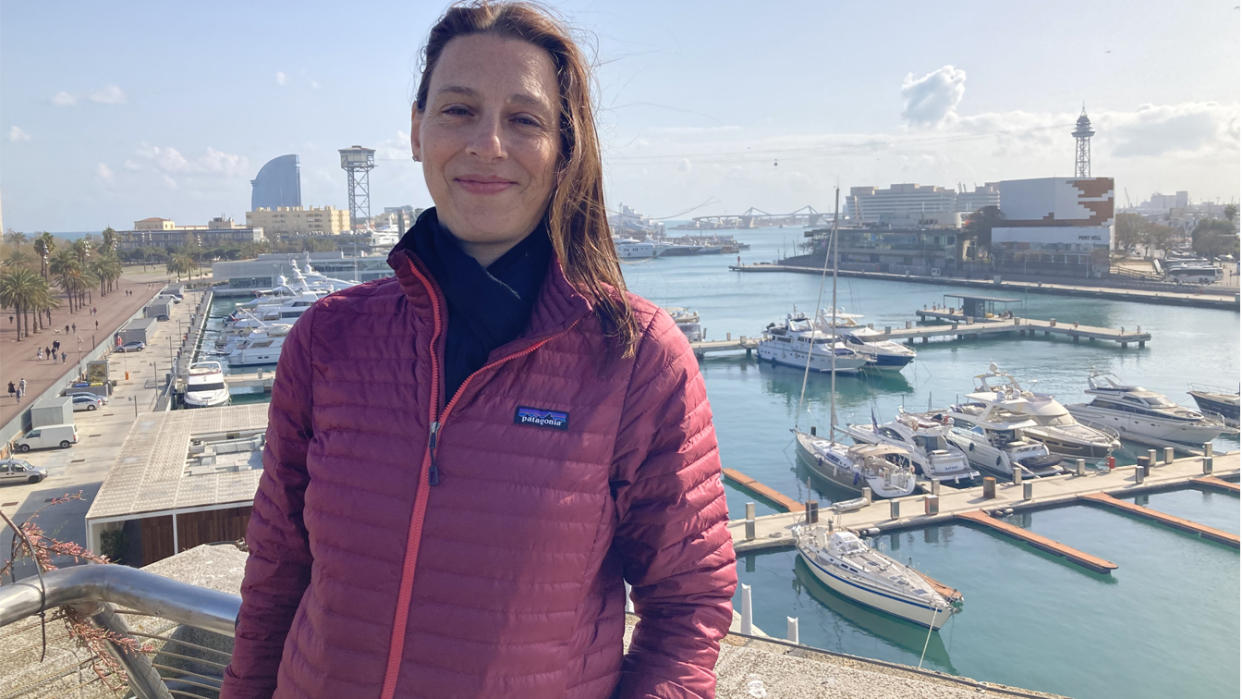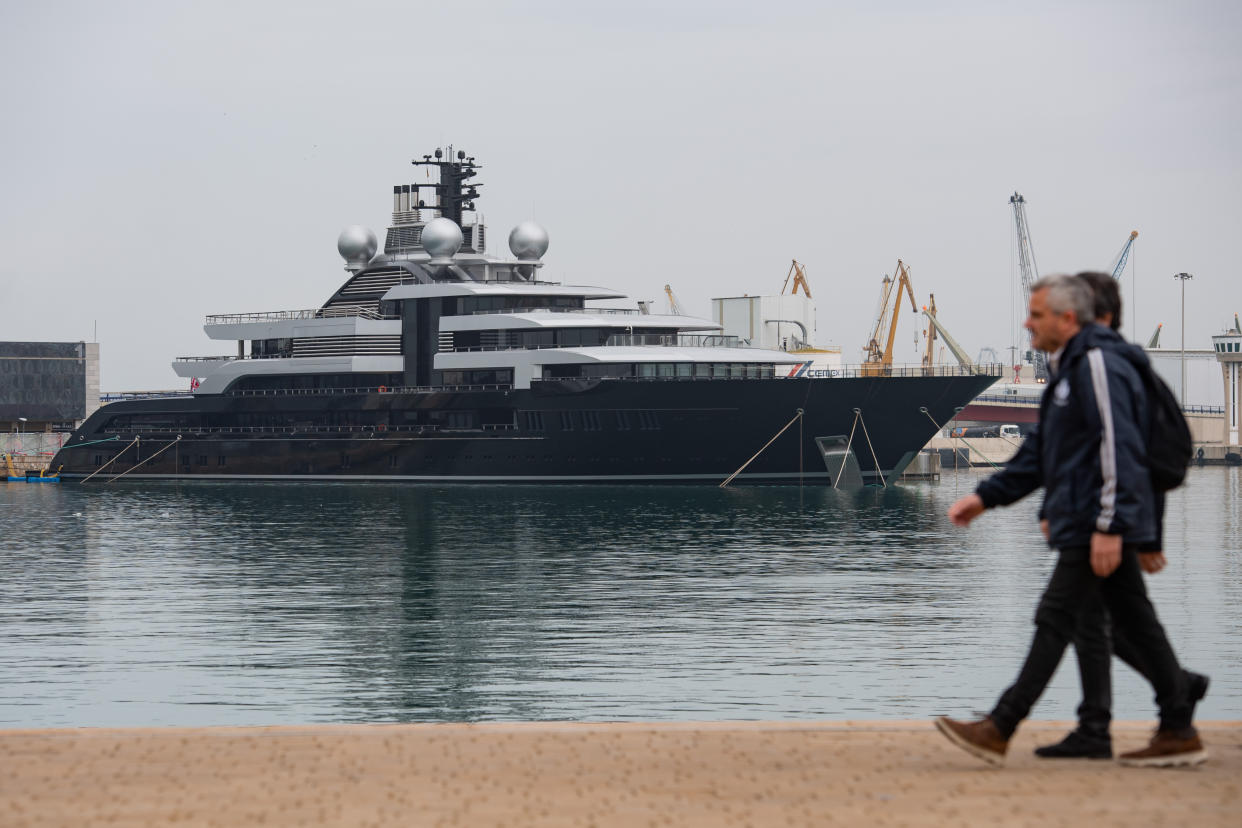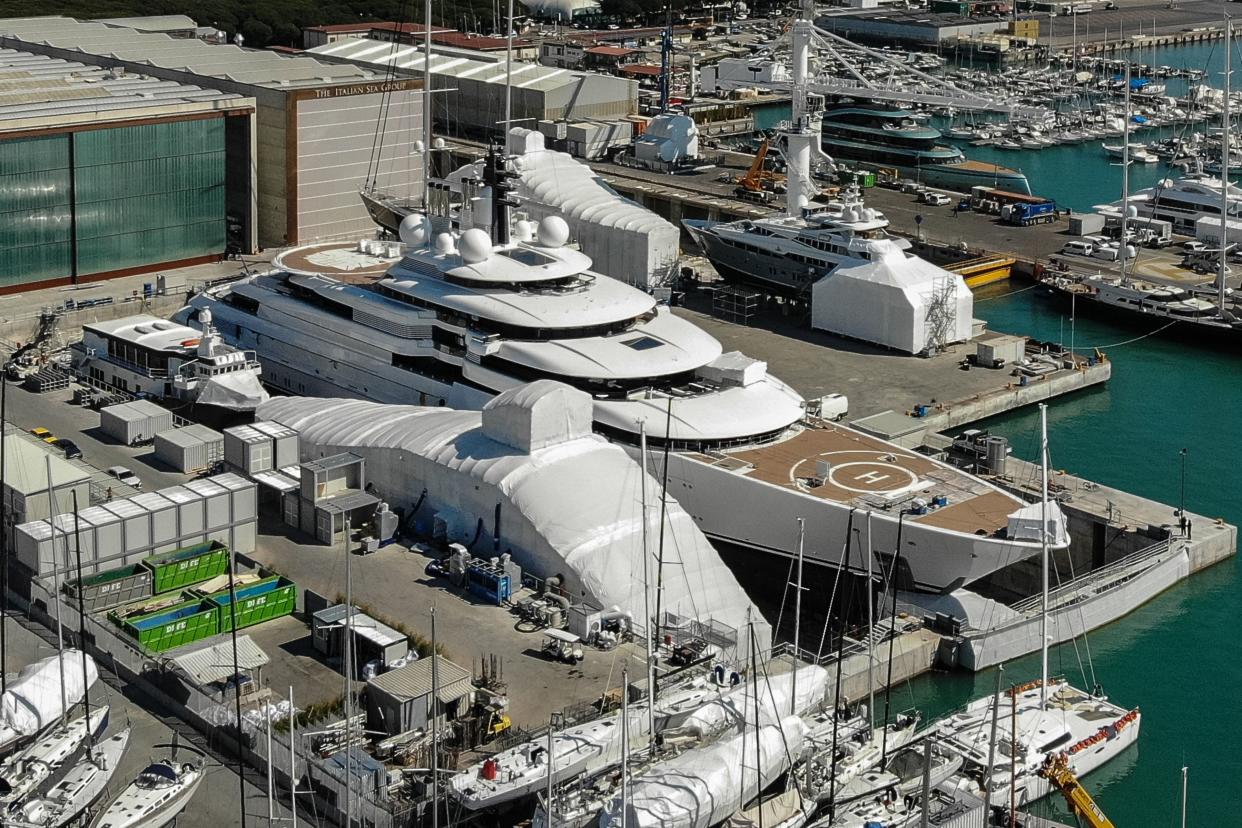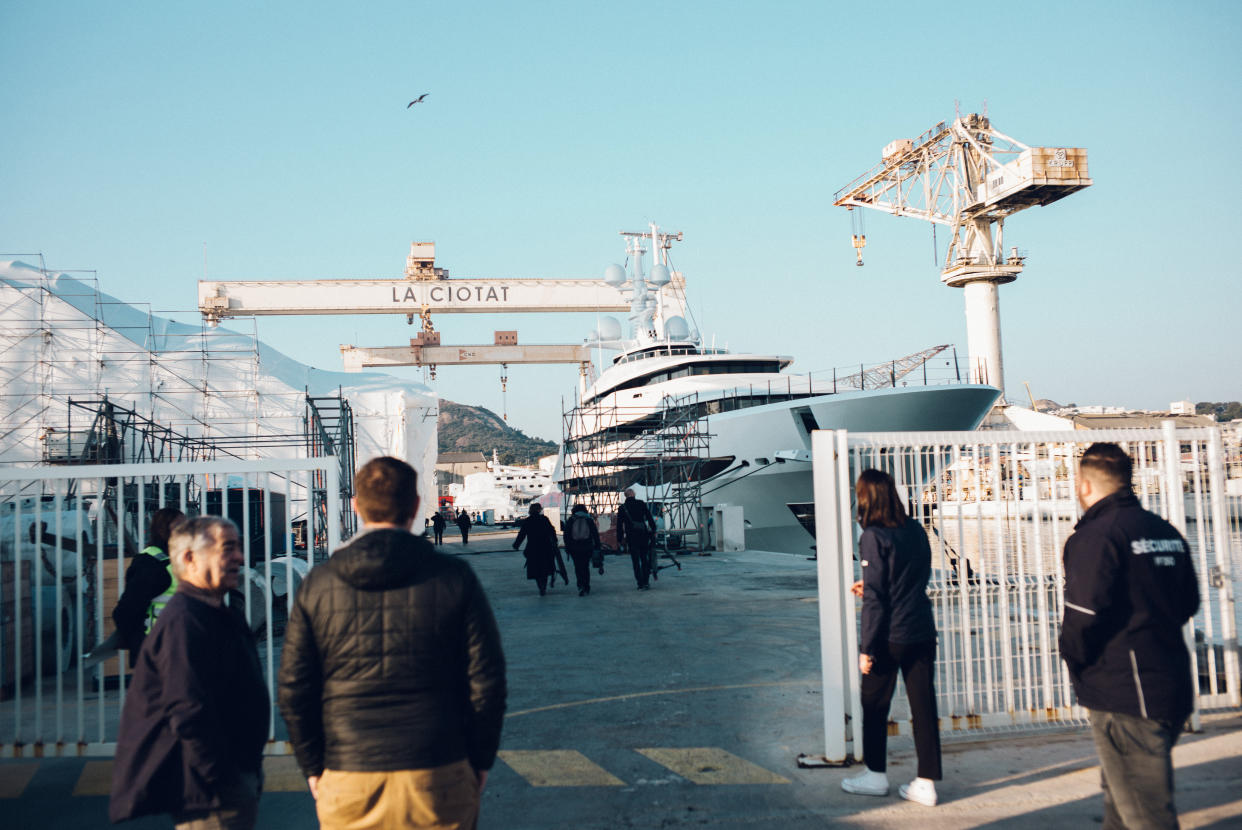Ex-CIA officer is helping lead the search for yachts owned by Russian oligarchs
BARCELONA, Spain — At the start of 2022, former CIA officer Alex Finley, a Colorado native now living in northeastern Spain, was simply researching her novel about a Russian oligarch with a megayacht and had no intention of sparking a global social media craze.
During her morning walks along the marina in downtown Barcelona, she began snapping shots of the ostentatious, multidecked superyachts believed to be owned by Russian oligarchs and posting the pictures on Twitter, bearing witness to one layer of the murky financial dealings and holdings of ultrarich Russians, many of whom are believed to have ties to President Vladimir Putin.

But after Russia invaded Ukraine — and dozens of countries, including the U.K. and the 27-member European Union, targeted Putin’s government and his wealthy friends with harsh sanctions — the megayachts began slipping out of Barcelona’s Port Vell. That’s not surprising, given that yachts belonging to oligarchs have been seized by the governments of the U.K., France, Germany, Croatia, Italy and Spain.
“This place is normally packed with very enormous yachts,” Finley, who worked for the CIA in West Africa and Europe from 2003 until 2009, told Yahoo News from the rooftop terrace of a restaurant overlooking the port.
Most of the Russian superyachts Finley has photographed at the port have left, including Solaris, Roman Abramovich’s 460-foot-long megayacht, which is valued at $611 million by VesselsValue and boasts 48 cabins, eight decks, a helipad, a swimming pool and even antimissile weapons. Also gone is Dilbar, a 512-foot ship owned by metals magnate Alisher Usmanov, who became rich 30 years ago by introducing plastic bags in Russia. The fourth-largest yacht in the world according to VesselsValue, Dilbar is valued at $587 million.
“Many megayachts are now rushing out” of Europe, Finley explained, adding that some are showing up in ports in the Maldives, the Seychelles, Dubai and Turkey, while others have gone off the radar.

Until Putin pressed ahead with his war in Ukraine, there were financial reasons for Western countries to open their arms to the oligarchs and their yachts. After a controversial renovation started a decade ago, utilizing financing from oligarch Vagit Alekperov, president of the Russian oil company Lukoil, Barcelona’s oldest port became one of the world’s only marinas able to moor 60 large luxury vessels at a time. It also adjoins MB92, one of the few shipyards able to repair and refit superyachts that are often so large they have swimming pools, retractable helicopter hangers, discos, Jacuzzis and beauty salons. “These are really high-tech ships,” said Finley. “You need more than a screwdriver to fix them.”
Confirming which superyachts are owned by Russian oligarchs is not always easy, given that many are bought and paid for through holding companies in tax havens such as the Cayman Islands and Bermuda. On March 14, Spanish authorities took control of the 279-foot Valerie, believed to be owned by former KGB officer Sergey Chemezov, CEO of the Russian defense firm Rostec, while the vessel was being repaired at Barcelona’s MB92.
"Today we seized — the technical term is 'provisionally immobilized' — a yacht belonging to one of the principal oligarchs," Spanish Prime Minister Pedro Sánchez announced. "We are talking about a yacht that we estimate is worth $140 million,” he said, adding, “There will be more.”

Indeed, within 48 hours Spanish authorities in Tarragona also seized the 443-foot Crescent, which is believed to be owned by Rosneft Oil CEO Igor Sechin and valued at $600 million. Next, Spain nabbed the 154-foot Lady Anastasia from a port in Mallorca. It is believed to be owned by billionaire Alexander Mikheev. Only two weeks earlier, that vessel had been partially sunk by a Ukrainian crew member who was angry that Mikheev is director general of Rosoboronexport, a Russian defense company. After his arrest, the crew member was released by Spanish authorities, who honored his request to return to Ukraine to fight.
At least nine megayachts had been seized in Europe through Monday, though on Tuesday the Finnish government said it had detained an additional 21 yachts that it suspects may be owned by oligarchs.
With Russia’s destruction of Ukraine playing out in real time on Western television screens and social media, the focus on yachts owned by oligarchs who have financially benefited from close ties to Putin has intensified. The number of Finley’s Twitter followers has doubled, jumping to 40,000 over a single week as users have rushed to share tips, photos and commentary on the whereabouts of the ships.
“The world is terrible, the war is terrible, but this is fun because we’re all in it together,” said Finley, explaining the popularity of her Twitter feed. “Somebody on Twitter described it as a cross between ‘The Hunt for Red October’ and ‘The Amazing Race.’” With #Yachtwatch, she said, “we can all crowdsource; we can all be part of trying to get this information out. It’s our own little way to help.”

Swedish economist Anders Åslund, author of “Russia’s Crony Capitalism,” a book about the making of “extremely status-conscious” Russian elites, told Yahoo News that to belong to the oligarch class “you have to have three things: If you don’t have a big yacht, a grand palace and a private plane, then who are you? Certainly not an oligarch.” Few bothered following the finances and assets of superwealthy Russians until very recently, he said, “but all of a sudden, because of [the] sanctioning of the yachts, people are interested.”
Dennis Causier of VesselsValue agrees that owning a superyacht, or several, “is a huge ego trip.” But, he told Yahoo News, the ships also provide security for oligarchs such as Abramovich. “Any high-net-worth person has to regard themselves as a kidnap threat or possible target by one organization or another.” Abramovich owns three, perhaps four, megayachts in different parts of the world, all serviced by helipads. He can flit around from yacht to yacht with his movements obscured.
The yachts provide “high security onboard,” Causier said. “Sometimes there are armed guards, and we know for a fact some have armor-plated safe rooms if the yacht comes under attack.” While some hold helicopters for quick getaways, they may also have fast-launch submarines, he added.
For Barcelona urban activist Gala Pin, the apparently fishy activities at the port are no surprise. Her group, Plataforma Defensem el Port Vell, fought the plans for the superyacht marina when they were first unveiled in 2012. “We were concerned about who was behind it,” she told Yahoo News, “and about how it would change the neighborhood.”

The original plans called for a large, ritzy restaurant and a concrete wall that would block the public’s view of the marina. Her group’s protests brought at least a few changes: The restaurant plans were downsized and the concrete wall became planks that offer limited visibility of the superyachts in port. The restaurant, however, has closed and, since sanctions against Russia were announced, Pin said, “the marina is almost empty.”
But that may be only temporary. The marina recently announced plans to pump another $22 million into renovations to make it the world’s largest superyacht port in the world. And even if Russian oligarchs may no longer be mooring there, orders for custom-made superyachts are booming.
As for uncovering oligarchs’ assets, the global search is just beginning. Earlier this week, the Organized Crime and Corruption Reporting Project unveiled Russian Asset Tracker, a crowdsourced approach to hunt down the land, mansions, companies, boats and planes of Putin’s “allies, his friends, his financiers and his enablers.”
Only days old, the site says it has “uncovered over $17.5 billion in assets, and counting.”
